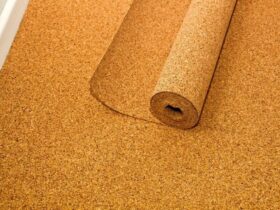Monolithic construction, which has become popular relatively recently, has a number of undeniable advantages that are today everywhere used, especially in the construction of multi -storey buildings. First of all, this technology changes the usual understanding of the layout of apartments, in private housing construction, it can significantly increase the area of rooms. The absence of seams in the responsible design increases heat — and the sound insulation of housing, as well as the use of light concrete, the porosity of which also positively affects the heat engineering parameters of the house. In addition, for monolithic construction, factory workpiece of building materials is not required — the formwork is built on the spot, a concrete solution is also prepared here. But the formwork is different, and with all the advantages of a monolithic erection of houses, it is it that does not have the last impact on the final parameters of the building.
In such construction, a removable or non -removable formwork is used. From the name, it is obvious that the first is only a form for pouring concrete, the second is part of the structure and the future house. Accordingly, each of the technologies has its own certain qualities that are not characteristic of the other.
For removable formwork, moisture -resistant plywood is most often used, its laminated or bakelite variety, as well as wooden shields. That is, it should be a sufficiently strong material that does not absorb water too quickly, otherwise the qualities of the solution will change, because the water will go into the formwork from it. When constructing such a design, it is important to monitor the evenness of the resulting walls — the difference in the width of the same plywood or shields can lead to a difference in wall thickness, which does not affect the characteristics of the finished building in the best way. It is believed that the main drawback of the removable formwork is the complexity of its installation, so it is almost impossible to use it on your own for private housing construction. However, it is this method that is most often used in the construction of cottages. Experts recommend in such cases to take the national structure for rent, riding themselves from the need to calculate and construct it. Although the option with plywood is a fairly economical solution. True, such walls will have to be insulated in the future.
Non -removable formwork is part of the design, which on the one hand is an advantage, and on the other — a disadvantage. In particular, it is impossible to use such formwork twice, which makes such a monolithic construction more expensive. However, the formwork as part of the structure makes the walls warmer and stronger. Today, polystyrene blocks are used as a non -removable frame. They significantly increase thermal insulation of the walls without increasing their masses.
Thus, each of the technologies of monolithic construction allows you to achieve good indicators from the finished house. And the choice of formwork depends on the possibilities and conditions of construction.













Оставить коммент.